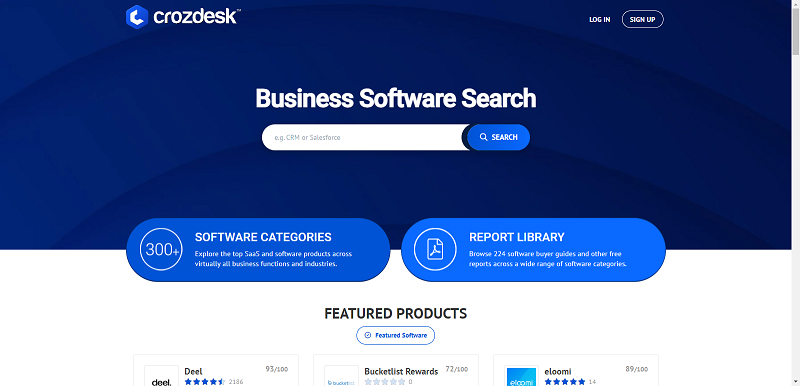Cost. Agility. Innovation. For the modern-day enterprise, the advantages of migrating business applications to the Cloud are many. From substantial cost savings realized through economies of scale and pay-per-use models, to faster innovation and time to market, to the agility and flexibility of auto-scaling systems to accommodate growing application loads, it is no surprise that more than 60 percent of enterprises will forego the traditional client-server architecture found On-Premises and migrate at least half of their infrastructure to the Cloud by 2018.
However, the Cloud is only as good as a business employees’ ability to effectively connect to it. Therefore, the performance of business applications and the delivery of the user experience have become very tightly entwined with enterprises’ network connectivity. With the complex Cloud ecosystem of networks, data centers and application and infrastructure providers, traversing a path from the enterprise end-user to the 5,100+ data centers and carrier hotels where the Cloud resides is riddled with challenges. As enterprises strive to meet the demands of the smarter consumer in the future and need to connect a larger and more distributed workforce to the Cloud due to a geographic expansion or acquisitions, their need to connect to and consume the Cloud will only grow more critical, while their road to connectivity grows more complex.

The data connectivity market today is highly fragmented, with no one service provider having ubiquitous coverage. Last-mile connections account for 82 percent of all downtime-related activity, 68 percent of overall network cost and 99 percent of complexity found in the network market today. Compounding the connectivity challenges are the differing processes for network configuration, implementation and management, leading to a wide variation of quality in customer experience and predictability in service delivery. Lack of transparency into network assets, service technologies that match application needs, real-time pricing and operational readiness also lead to blind spots in decision-making. In this complex market, how can enterprises ensure they find the best cost and performance?
Having insight, visibility and increased control over connectivity decisions has become one success point of building, launching and maintaining enterprise business applications in the Cloud. Because connectivity as well as applications are growing in complexity and requirements, enterprise end-users require access to tools that leverage data and automation to simplify the experience for the IT professional; tools that enable them to overcome these challenges and simplify their ability to connect to and consume the Cloud. One of the best tools is a marketplace of networks, which can be used not only to simplify connectivity in today’s fractured market, but also for added service data points, performance options, service information and cost effectiveness.
A marketplace of networks connects buyers to destinations, facilitates end-to-end performance and optimizes the customer experience. It simplifies enterprises’ connectivity to the Cloud by offering companies a better understanding of the service technologies available at specific locations, as well as service attributes and visibility into real-time pricing so that enterprises can make intelligent decisions about connectivity.
While some large national providers may offer standardized Cloud connectivity, they rarely have the flexibility or transparency to provide the optionality for enterprises to make strategic, intelligence-driven business decisions that allow them to purchase the right connectivity for the right application at the right location and the right price. A marketplace of networks is a dynamic tool that offers enterprises more control and visibility in making decisions, while simultaneously providing added confidence in their ability to connect high-performance Cloud applications.
The benefits of turning to a marketplace of networks for Cloud connectivity include:
Visibility – To optimize the cost and performance of connectivity, a marketplace of networks provides increased visibility into the availability, technology and pricing of network solutions that connect business locations to the Cloud. This arms enterprises with the market intelligence to make more informed business decisions.
“What-if” Modeling – As enterprises continue to migrate business applications to the Cloud, their Wide Area Network (WAN) architectures will also need to evolve. A marketplace of networks provides enterprise IT teams with “what-if” modeling capabilities that simplify WAN design and Cloud interconnection, replacing time- consuming RFPs. By simply entering locations and selecting specific service, latency, contract term and pricing criteria, enterprises can filter connectivity options and design a WAN network architecture that meets their specific business objectives.
Real-Time Pricing – Enterprises are dynamic and have new destinations to connect as they grow. The ability to access real-time, automated pricing of network connectivity enables them to make timely, intelligent decisions when connecting employees at locations to the Cloud. With a marketplace of networks, enterprises obtain network connectivity pricing in a matter of minutes, allowing them to innovate, connect and scale their applications faster.
Aggregation – A marketplace of networks aggregates various network connectivity solutions in one location for streamlined turn-up and reduced management complexity. Enterprises benefit from a consolidated bill with a single MSA and supporting SLAs, eliminating the complexities of ordering and provisioning from multiple network Service Providers.
Now that we have identified an effective platform that enables simplified enterprise Cloud connectivity and consumption, the next step is identifying the best, most cost-effective connectivity technology for connecting applications and locations. In ensuing installments of our monthly Cloud Connectivity CloudTweaks articles, we’ll discuss Carrier Ethernet as the optimal solution for connecting enterprise end-users to the Cloud. We will also explore Carrier Ethernet’s ability to provide secure, reliable connectivity to business applications in the Cloud, enabled through the same secure direct Ethernet connection being leveraged for other enterprise services.
By Mary Stanhope





